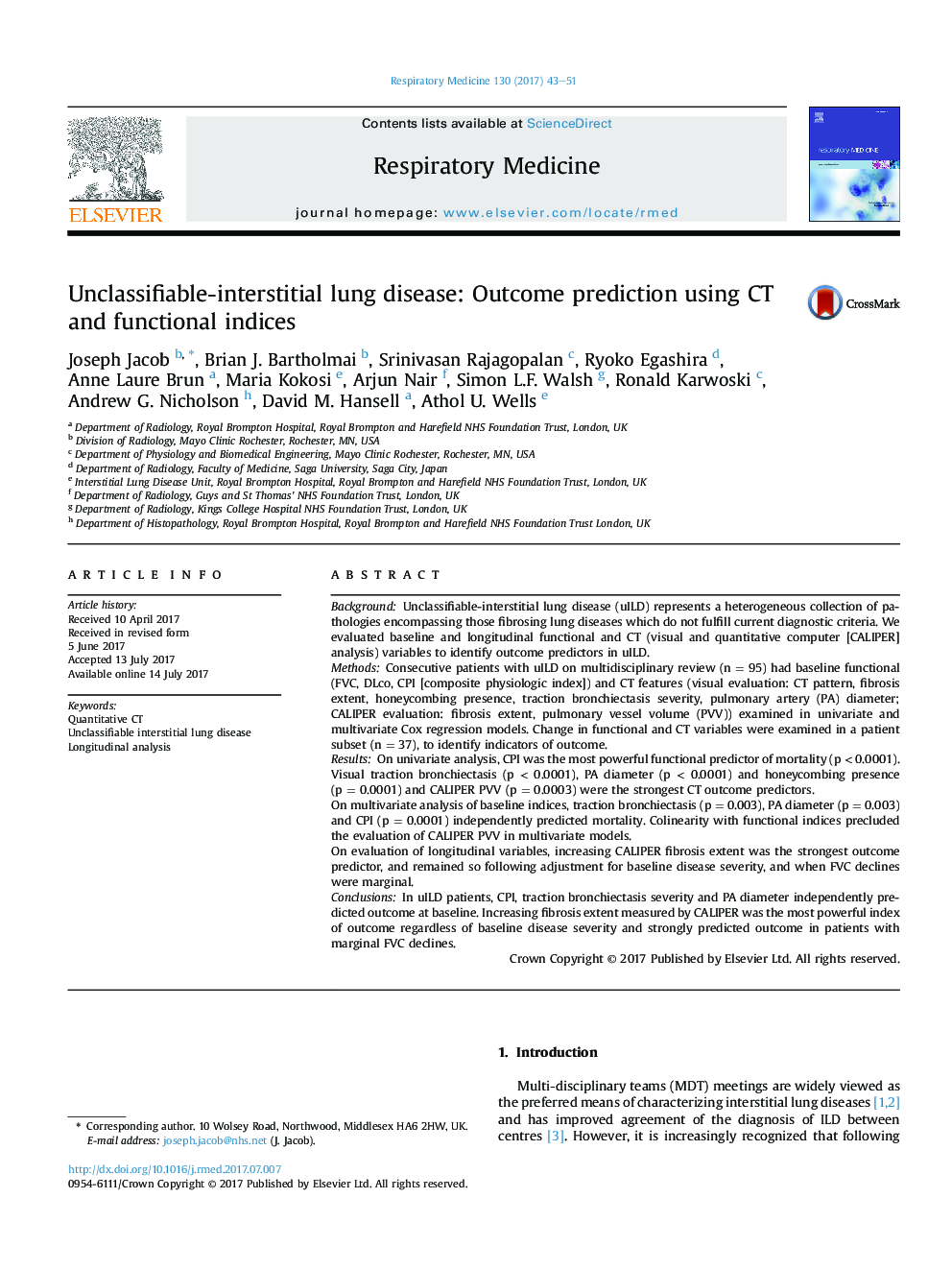| Article ID | Journal | Published Year | Pages | File Type |
|---|---|---|---|---|
| 5724806 | Respiratory Medicine | 2017 | 9 Pages |
â¢At baseline in uILD the composite physiologic index independently predicts survival.â¢PA diameter and traction bronchiectasis scores also independently predict mortality.â¢Change in CALIPER fibrosis scores independently predict survival in uILD.â¢Change in CALIPER fibrosis scores better predicts survival than baseline measures.â¢CALIPER fibrosis extent independently predicts outcome when FVC decline is marginal.
BackgroundUnclassifiable-interstitial lung disease (uILD) represents a heterogeneous collection of pathologies encompassing those fibrosing lung diseases which do not fulfill current diagnostic criteria. We evaluated baseline and longitudinal functional and CT (visual and quantitative computer [CALIPER] analysis) variables to identify outcome predictors in uILD.MethodsConsecutive patients with uILD on multidisciplinary review (n = 95) had baseline functional (FVC, DLco, CPI [composite physiologic index]) and CT features (visual evaluation: CT pattern, fibrosis extent, honeycombing presence, traction bronchiectasis severity, pulmonary artery (PA) diameter; CALIPER evaluation: fibrosis extent, pulmonary vessel volume (PVV)) examined in univariate and multivariate Cox regression models. Change in functional and CT variables were examined in a patient subset (n = 37), to identify indicators of outcome.ResultsOn univariate analysis, CPI was the most powerful functional predictor of mortality (p < 0.0001). Visual traction bronchiectasis (p < 0.0001), PA diameter (p < 0.0001) and honeycombing presence (p = 0.0001) and CALIPER PVV (p = 0.0003) were the strongest CT outcome predictors.On multivariate analysis of baseline indices, traction bronchiectasis (p = 0.003), PA diameter (p = 0.003) and CPI (p = 0.0001) independently predicted mortality. Colinearity with functional indices precluded the evaluation of CALIPER PVV in multivariate models.On evaluation of longitudinal variables, increasing CALIPER fibrosis extent was the strongest outcome predictor, and remained so following adjustment for baseline disease severity, and when FVC declines were marginal.ConclusionsIn uILD patients, CPI, traction bronchiectasis severity and PA diameter independently predicted outcome at baseline. Increasing fibrosis extent measured by CALIPER was the most powerful index of outcome regardless of baseline disease severity and strongly predicted outcome in patients with marginal FVC declines.
